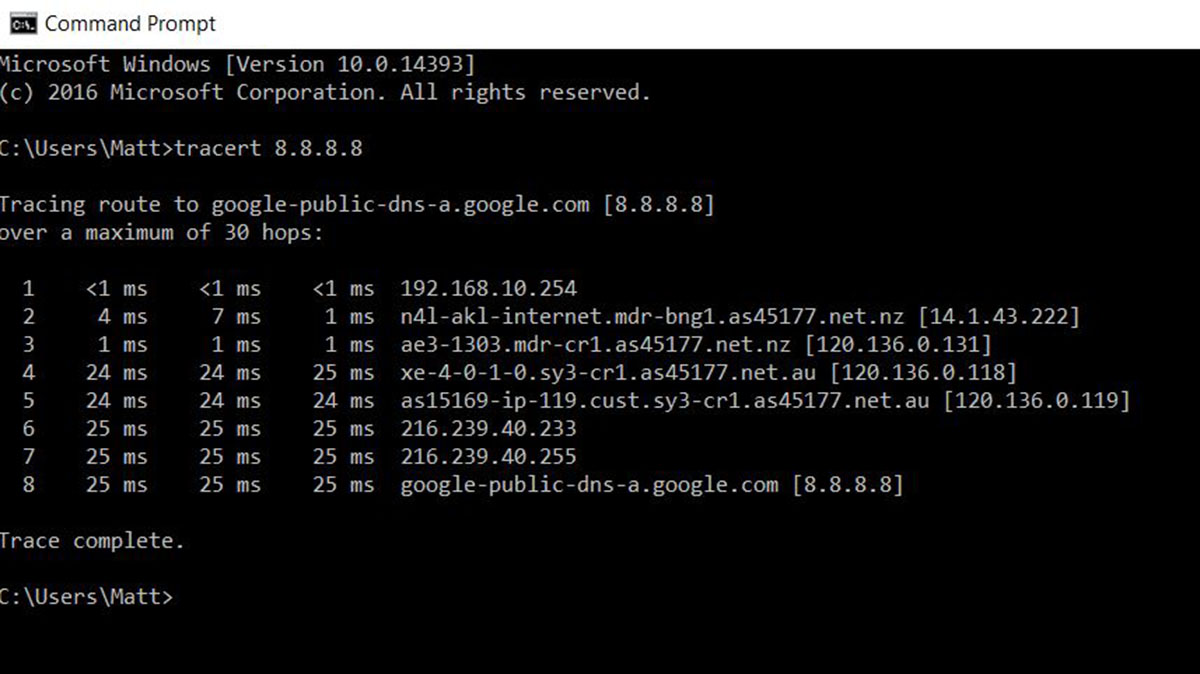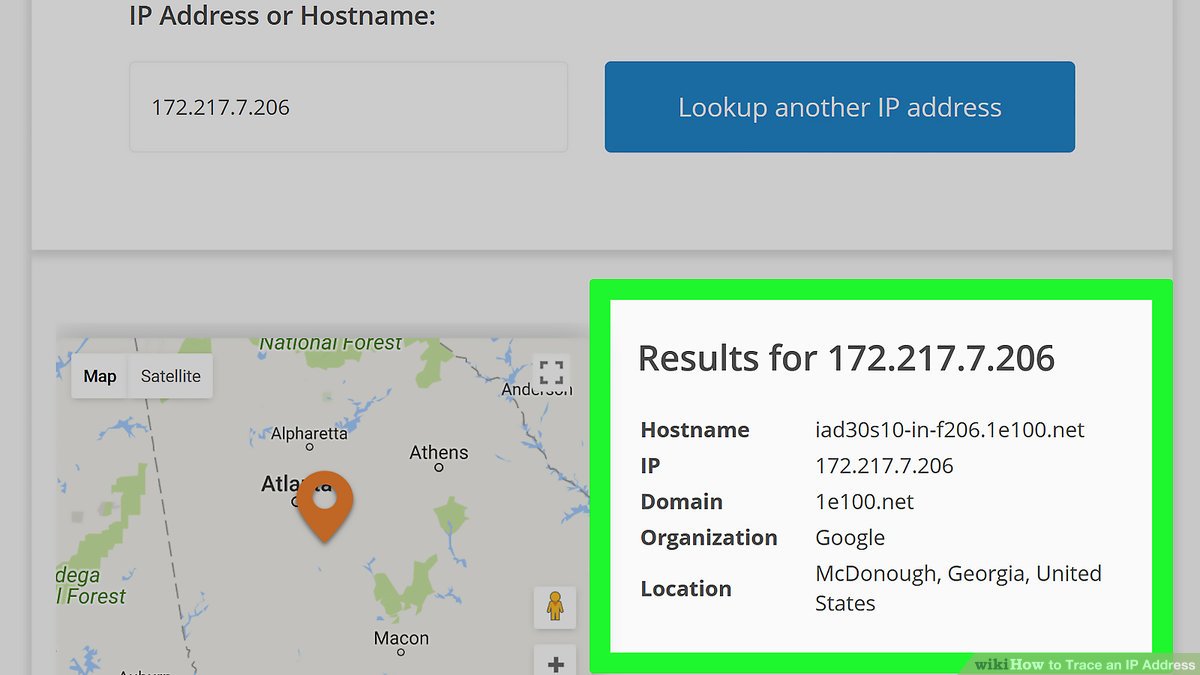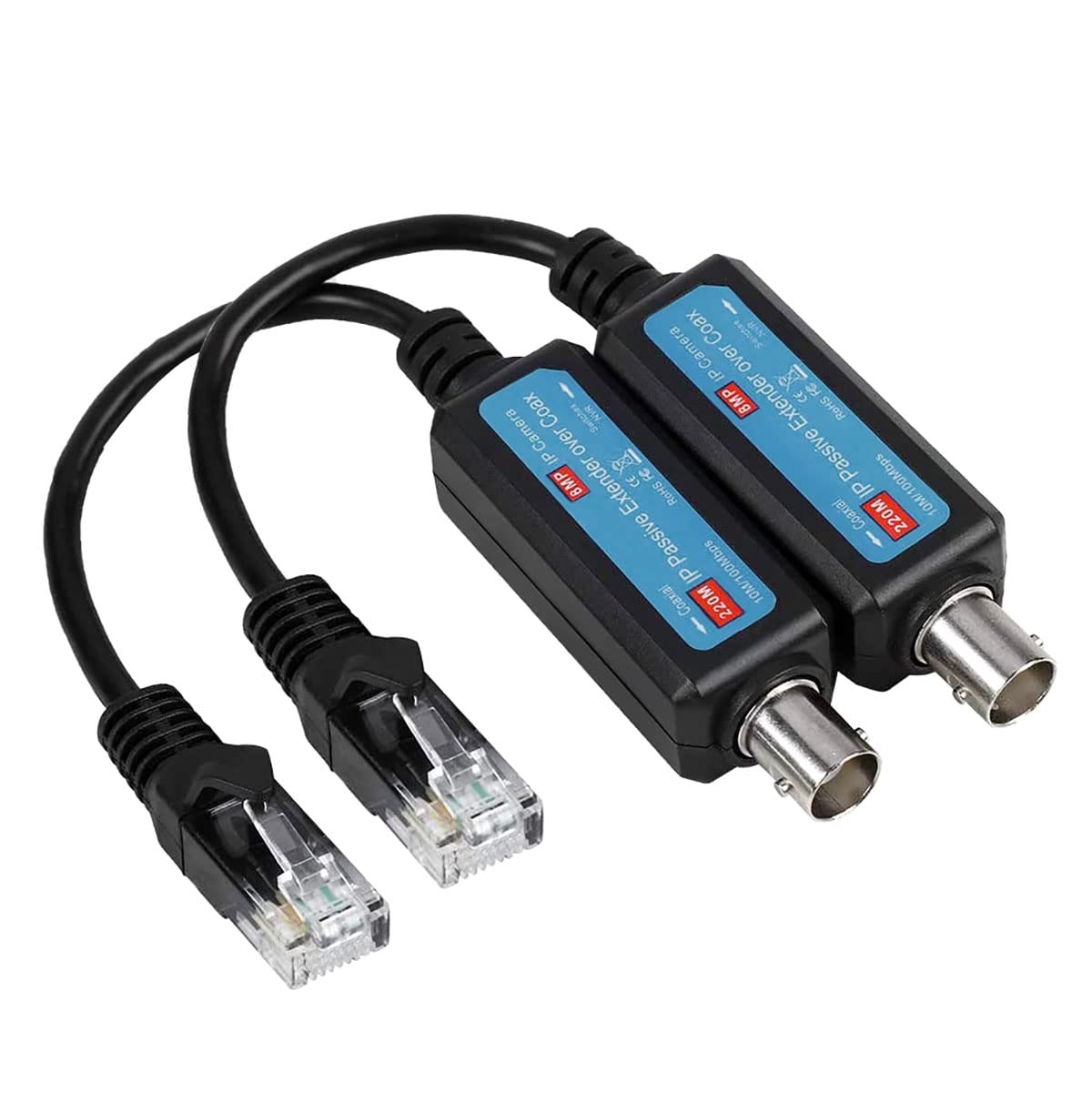Introduction
The world we live in today is heavily reliant on network connectivity. Whether it’s for business communications, online shopping, social media, or streaming services, the internet is an integral part of our daily lives. However, have you ever wondered how data travels from one point to another across the vast network infrastructure? This is where network tracing comes into play.
Network tracing is the process of mapping and analyzing the routes that data packets take as they travel through a network. It involves identifying all the routers and switches that the data passes through between the source and destination points. By understanding the path taken, network administrators can pinpoint any bottlenecks, potential security vulnerabilities, or performance issues that may arise.
Network tracing is particularly crucial in situations where network issues need to be resolved quickly. It allows for efficient troubleshooting, enabling network administrators to identify the root cause of connectivity problems and implement effective solutions. Furthermore, network tracing plays a vital role in network optimization, allowing organizations to enhance their network infrastructure and improve the overall reliability and performance of their systems.
Determining the routes between two points in a network can be a complex task. With the countless number of routers and networks interconnected worldwide, it would be almost impossible to manually trace the path taken by data packets. Thankfully, there are sophisticated software tools available that simplify this process.
In the next sections, we will explore the different tools used for network tracing, specifically focusing on the software tool used to trace all of the routers between two points. We will delve into how this tool works and the benefits it offers for network administrators and businesses alike.
What is network tracing?
Network tracing, also known as network path tracing or network route tracing, is the process of tracking the path that network packets take from a source to a destination. It involves identifying the intermediate network devices, such as routers and switches, through which the packets travel.
When data is transmitted over a network, it is broken down into packets for efficient transfer. These packets are then sent across various network devices, following a specific route until they reach their intended destination. Network tracing allows network administrators to visualize and analyze this route, enabling them to troubleshoot connectivity issues, optimize network performance, and ensure the reliability of the network infrastructure.
One of the primary reasons for performing network tracing is to identify any potential bottlenecks or points of failure in the network. By tracing the network path, administrators can pinpoint areas where congestion or delays may occur, allowing them to take appropriate measures to optimize the network flow and ensure efficient data transmission.
Additionally, network tracing is crucial for diagnosing and resolving connectivity issues. When a connection problem arises, network administrators can use tracing tools to identify the specific routers or network segments where the connection is lost or interrupted. This information helps in troubleshooting and implementing appropriate solutions to restore connectivity.
Moreover, network tracing plays a vital role in network security. By tracing the network path, administrators can identify any unauthorized or unexpected paths that data packets may be taking. This allows them to detect and mitigate potential security threats, such as data interception or unauthorized access to sensitive information.
Overall, network tracing is an essential process for maintaining and optimizing network infrastructure. It provides valuable insights into the path data takes through a network, enabling administrators to troubleshoot issues, enhance performance, and ensure the secure and efficient transmission of data packets.
Why is network tracing important?
Network tracing is of utmost importance in today’s interconnected world for various reasons. It enables network administrators and organizations to ensure reliable network performance, diagnose connectivity issues, and enhance network security. Let’s explore why network tracing is so crucial:
Identification of bottlenecks and performance optimization: Network tracing allows administrators to identify areas of congestion, packet loss, or delays in data transmission. By pinpointing these bottlenecks, they can optimize the network infrastructure, reroute traffic, or allocate resources accordingly, thereby enhancing network performance and ensuring smooth data flow.
Troubleshooting connectivity issues: When network connectivity problems arise, it can severely impact productivity and business operations. Network tracing enables administrators to track the path of data packets and identify the specific routers or network segments where the issue occurs. This insight is instrumental in troubleshooting and resolving connectivity problems promptly, minimizing downtime and disruptions.
Enhancing network security: Network tracing plays a crucial role in identifying any unauthorized or unexpected paths through which data packets may travel. This helps administrators detect potential security threats, such as data interception or unauthorized access to sensitive information. With this information, appropriate security measures can be implemented to safeguard the network infrastructure.
Compliance and regulatory requirements: Many industries have specific compliance and regulatory requirements regarding network security and data transmission. Network tracing allows organizations to demonstrate compliance by ensuring that data packets are following the intended routes and not being compromised during transit.
Capacity planning and network scalability: Through network tracing, administrators can gain insights into the usage and load on different network segments. This data is valuable for capacity planning and network scalability, as organizations can identify potential areas of growth and allocate resources accordingly. By proactively addressing capacity constraints, network administrators can ensure uninterrupted service and optimal performance.
Overall, network tracing is vital for maintaining a robust and secure network infrastructure. It enables organizations to identify and resolve connectivity issues, optimize network performance, and ensure compliance with regulatory requirements. By leveraging network tracing tools and techniques, businesses can enhance their operational efficiency, productivity, and ultimately deliver a seamless experience for their users and customers.
Different tools for network tracing
There are several tools available for network tracing, each offering different capabilities and features to analyze and trace the route of data packets. Let’s explore some of the commonly used tools for network tracing:
1. Ping and Traceroute: Ping and Traceroute are basic command-line tools that are often built into operating systems. They allow network administrators to test the connectivity between two points and trace the route taken by packets. Ping sends a small packet to the destination and measures the round-trip time, while Traceroute sends multiple packets with increasing Time-To-Live (TTL) values to determine the path taken by the packets and the routers they pass through.
2. Wireshark: Wireshark is a powerful open-source packet analyzer that captures and analyzes network traffic. It provides detailed information about each packet, including the source and destination addresses, protocols used, and the routers through which the packets travel. Wireshark is widely used for network troubleshooting, performance analysis, and network security auditing.
3. Visual Traceroute: Visual Traceroute is a graphical tool that visually displays the path of packets between two points on a map. It allows users to see the geographical location of routers and network segments, making it easier to identify any abnormal routes or latency issues. Visual Traceroute provides a user-friendly interface, making it suitable for both network administrators and non-technical users.
4. SolarWinds Traceroute NG: SolarWinds Traceroute NG is a comprehensive network tracing tool that provides real-time visualization of network paths. It offers advanced features such as the ability to perform bulk tracing, view historical path data, and monitor network latency. Traceroute NG also includes advanced reporting capabilities, making it suitable for large-scale network environments.
5. Path Analyzer Pro: Path Analyzer Pro is a commercial network tracing tool that combines the functionalities of ping, traceroute, and whois lookup. It provides detailed visualizations of network routes, including network topology, graphed latency, and geographic mapping. Path Analyzer Pro offers additional features such as email alerts, report generation, and the ability to save and compare trace results.
6. NeoTrace: NeoTrace is a discontinued network tracing tool that was popular for its user-friendly interface and detailed graphical representations of network paths. It provided information on network latency, packet loss, and route visualization. Although it is no longer supported, it was widely used in the past for basic network tracing tasks.
These are just a few examples of the tools available for network tracing. The choice of tool depends on the specific requirements of the network administrator or organization, including the desired level of detail, reporting capabilities, and budget considerations. By utilizing these tools effectively, network administrators can gain valuable insights into network paths, optimize performance, and ensure the efficient and secure transmission of data packets.
Tracing routers between two points
Tracing routers between two points involves mapping the route that data packets take as they travel from a source to a destination. This process allows network administrators to identify the intermediate routers and switches that the packets pass through and understand the path taken by the data. Let’s explore how the process of tracing routers between two points works:
When a network packet is sent from a source device, it is encapsulated with various layers of protocols and addressing information. The packet is then forwarded to the nearest router or switch based on the routing table, which contains information about the network topology and optimal paths for data transmission.
The router examines the destination IP address of the packet and consults its routing table to determine the next hop along the route. It forwards the packet to the next hop router based on the best available path. This process continues until the packet reaches the destination.
To trace the routers between two points, various tools can be used that employ techniques such as ICMP (Internet Control Message Protocol) and TTL (Time-To-Live) values. These tools send packets with increasing TTL values (starting from 1) towards the destination. Each router encountered along the path decrements the TTL value by 1. If the TTL value reaches 0, the router discards the packet and sends an ICMP error message back to the source device.
By analyzing the ICMP error messages received and the IP addresses of the routers, network administrators can determine the routers through which the packets passed. This information helps in understanding the network topology, identifying any potential areas of congestion or performance issues, and troubleshooting connectivity problems.
Additionally, some tracing tools provide graphical representations of the network path, indicating the geographical location of the routers. This visualization aids in identifying the physical path the packets take, allowing administrators to evaluate the efficiency of the route and make any necessary optimizations.
It is important to note that the process of tracing routers between two points relies on the cooperation of the routers along the path. Some routers may be configured to block or ignore the ICMP packets used for tracing, which can affect the accuracy and completeness of the tracing results.
Overall, by tracing the routers between two points, network administrators gain valuable insights into the path taken by data packets. This information facilitates network troubleshooting, optimization, and the identification of potential performance bottlenecks. It empowers administrators to make informed decisions in managing and securing the network, ultimately leading to enhanced network performance and reliability.
Software tool for tracing routers
When it comes to tracing routers between two points, there are various software tools available that simplify and streamline the process. These tools offer advanced features and functionalities to accurately trace the route of data packets and identify the intermediate routers. Let’s delve into the software tool specifically designed for this purpose:
1. Network Mapping and Tracing Software: This is a specialized software tool that provides a comprehensive set of features for network tracing. It allows administrators to visualize and map the network topology, including routers, switches, and other network devices. With this tool, tracing the route between two points becomes easier by providing a clear graphical representation of the network path.
The software typically uses techniques like ICMP and TTL values to trace the routers. It sends packets with increasing TTL values to elicit ICMP error messages from routers along the path. By analyzing the received messages, the software identifies the routers and maps the path taken by the packets.
Some network mapping and tracing software also provide additional features such as historical data analysis, real-time monitoring, and reporting capabilities. These features help administrators gain insights into network performance, identify bottlenecks, and track changes in the network infrastructure over time.
2. Route Tracing Tools: Route tracing tools are designed specifically for tracing the route of data packets between two points in a network. These tools typically use ICMP-based techniques, similar to the ones mentioned above, to trace the routers along the path.
Route tracing tools often provide detailed information about each router encountered, including IP addresses, response times, and other relevant data. Some tools also display the geographical location of routers on a map, making it easier to visualize the network path.
These tools are typically lightweight and easy to use, making them suitable for both network administrators and non-technical users who need to diagnose connectivity issues or trace routes between different points in the network.
3. Network Performance Monitoring Systems: Network performance monitoring systems not only provide real-time insights into network performance but also offer tracing capabilities. These systems continuously monitor network traffic, collect data on packet routes, and provide detailed visualizations of network paths.
With network performance monitoring systems, administrators can trace routers between two points and gain valuable insights into network latency, packet loss, and other performance metrics. This information helps in diagnosing network issues, optimizing performance, and ensuring efficient data transmission.
When selecting a software tool for tracing routers, it is important to consider factors such as ease of use, scalability, reporting capabilities, and compatibility with existing network infrastructure. By leveraging the capabilities of these software tools, network administrators can streamline the process of tracing routers, gain valuable insights into network paths, and effectively manage their network infrastructure.
How does the software tool work?
The software tool for tracing routers utilizes various techniques and protocols to accurately map the route that data packets take between two points. The tool employs a combination of network protocols, such as ICMP (Internet Control Message Protocol) and TTL (Time-To-Live) values, to achieve this. Here’s a breakdown of how the software tool works:
1. Sending packets with increasing TTL: The software tool starts by sending packets with an initial TTL value, typically set to 1 or 2. The TTL value represents the maximum number of hops or routers a packet can pass through before being discarded. The tool sends these packets towards the destination, incrementing the TTL value with each subsequent packet.
2. Receiving ICMP error messages: As the packets travel towards the destination, they encounter routers along the way. When a packet’s TTL value reaches 0, the router discards the packet and sends an ICMP Time Exceeded error message back to the source device. The software tool captures these ICMP error messages to identify the routers that the packets have passed through.
3. Analyzing the ICMP error messages: The software tool analyzes the received ICMP error messages to extract information about each router. The messages typically include the IP address of the router that sent the error message. By collecting and processing these error messages, the tool constructs a trace route that represents the path taken by the packets.
4. Mapping the network path: Once the software tool has gathered the necessary information, it maps the network path between the source and destination points. This mapping can be displayed graphically, showing the routers as nodes and the connections between them as links. Some tools also provide additional information about each router, such as geolocation data or performance metrics.
During the tracing process, the software tool may encounter several scenarios that can affect the accuracy and completeness of the route mapping. For example, routers may be configured to block or ignore ICMP packets, which can prevent the tool from receiving the necessary error messages. Additionally, some routers may employ security measures that hide their presence, making it more challenging for the tool to detect them.
It’s important to note that the specific functionality and capabilities of the software tool may vary depending on the tool itself and the manufacturer. Some tools may offer advanced features such as historical tracking, real-time monitoring, or integration with other network management systems.
By leveraging the capabilities of the software tool, network administrators can gain valuable insights into the routers and paths that data packets traverse between two points. This information enables efficient troubleshooting, optimization of network performance, and ensures the reliability and security of the network infrastructure.
Benefits of using the software tool
The software tool for tracing routers offers several benefits for network administrators and organizations. By utilizing this tool, they can gain valuable insights into network paths, troubleshoot connectivity issues, optimize network performance, and enhance the overall reliability and security of the network infrastructure. Let’s explore some of the key benefits of using the software tool:
1. Enhanced troubleshooting: The software tool provides network administrators with a clear and visual representation of the network path between two points. This helps in troubleshooting connectivity issues by pinpointing any routers or network segments where the packets encounter problems. Administrators can identify any bottlenecks or points of failure along the route, making it easier to resolve issues and minimize network downtime.
2. Optimized network performance: By tracing the routers and paths taken by data packets, network administrators can identify areas of congestion, latency, or packet loss. Armed with this information, they can take proactive measures to optimize network performance, such as rerouting traffic or adding additional resources where needed. This ensures that network resources are utilized efficiently, leading to an improved user experience and increased productivity.
3. Improved network security: The software tool helps in detecting unauthorized or unexpected paths through which data packets may be traveling. By visualizing the network path and analyzing the routers involved, administrators can identify potential security threats, such as unauthorized access or data interception. This allows for timely intervention and the implementation of appropriate security measures to safeguard the network infrastructure.
4. Efficient capacity planning: Tracing routers with the software tool provides insights into network usage, load balancing, and capacity constraints. Administrators can identify areas of high network traffic and plan for network scalability accordingly. By proactively addressing capacity constraints, they can ensure a smooth flow of data and uninterrupted service for users.
5. Streamlined network documentation: The software tool allows administrators to document and visualize the network paths between different points. This documentation provides a valuable resource for network troubleshooting, future upgrades, and knowledge transfer within the organization. Network diagrams and path histories can be easily shared and referenced, streamlining network management tasks.
6. Time and cost savings: The software tool automates the process of tracing routers, saving valuable time for network administrators. Instead of manually tracking the path taken by data packets, administrators can rely on the tool to provide accurate and real-time information. This automation reduces the potential for human error and minimizes the time required to diagnose and resolve network issues, resulting in cost savings for the organization.
In summary, the software tool for tracing routers offers numerous benefits for network administrators and organizations. By leveraging its capabilities, administrators can troubleshoot network issues efficiently, optimize performance, improve security, streamline documentation, and achieve cost savings. Overall, the software tool empowers administrators to maintain a robust and reliable network infrastructure, delivering a seamless and secure experience for users and customers.
Conclusion
Network tracing plays a crucial role in understanding and managing the intricate paths that data packets take within a network. By tracing routers between two points, network administrators can gain valuable insights into network performance, troubleshoot connectivity issues, optimize the network infrastructure, and enhance security.
Through specialized software tools, network administrators are empowered to accurately map the route that data packets follow. These tools utilize techniques such as ICMP and TTL values to trace the routers and provide graphical representations of the network path. With the ability to visualize and analyze the network path, administrators can efficiently troubleshoot connectivity issues, identify potential bottlenecks, and optimize network performance.
Furthermore, utilizing software tools for tracing routers offers additional benefits such as improved network security, efficient capacity planning, streamlined network documentation, time and cost savings, and enhanced network reliability. By leveraging these tools, network administrators can ensure a robust and secure network infrastructure while delivering a seamless experience for users and customers.
As technology continues to advance and networks become increasingly complex, the need for accurate and efficient network tracing tools becomes more critical. By staying updated with the latest software tools and leveraging their capabilities, network administrators can effectively manage and optimize their networks, adapt to changing demands, and ensure smooth and reliable data transmission.
In conclusion, the software tools available for tracing routers are indispensable resources for network administrators. These tools simplify the process of tracing network paths, allow for efficient troubleshooting, enhance security, optimize performance, and contribute to the overall reliability of the network infrastructure. By harnessing the power of these tools, organizations can meet the challenges of today’s interconnected world and deliver seamless connectivity to their users.

























